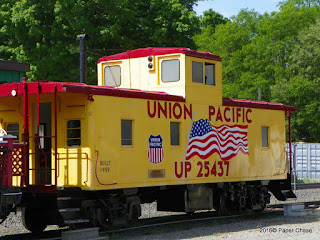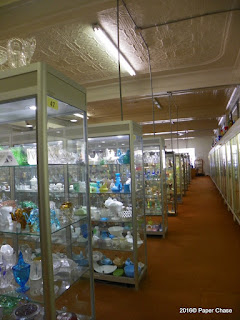Kidd's Mills Covered Bridge is a historic wooden covered bridge built in 1868 and is part of a National Historic District. According to WiKipedia, it is rare example of a Smith Cross Truss bridge in the eastern United States. In the early 1960's Mercer County, PA adopted a resolution to maintain the structure as an
historic landmark, since the bridge had been bypass and slated for demolition. Pennsylvania is the birthplace of the covered bridge. At one time in the 1800's Pennsylvania had about 1,500 covered bridges.Today with 209 covered bridges, Pennsylvania has the most covered bridges of any state.
The new bridge
The park was very peaceful
The next adventures are in New York State with visits to the Jello Museum, part of the Barn Quilt Trail and Niagara Falls.


























































